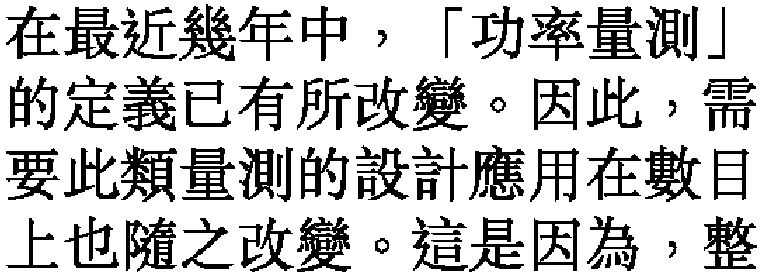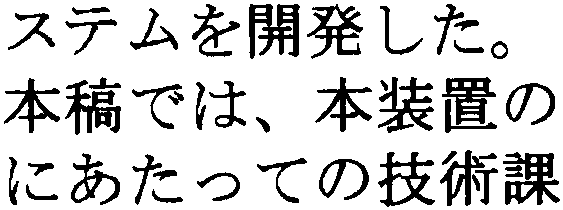
Readiris optionally offers recognition of four Asian languages: Japanese, Simplified and Traditional Chinese and Korean.
Contrary to the Latin, Greek and Cyrillic alphabets, these languages use small icons (ôideogramsö), not letters, to represent reality.
Chinese script is derived from picture writing. It is written with thousands of distinctive characters called ôideogramsö or ôpictogramsö which have no relation to the sound of a word.
The earliest Chinese characters were pictographs, such as a crescent for the moon, or a circle with a dot in the center to represent the sun. Gradually these gave way to non-pictorial ideograms which, in addition to standing for tangible objects, also represented abstract concepts.

The majority of Chinese characters consist of two elements: a ôsignificö, which indicates the meaning of a word, and a ôphoneticö, which indicates the sound.
In a large dictionary there are 40,000 to 50,000 characters (many of which are archaic or obscure), while the telegraphic code book contains nearly 10,000 symbols. Some 3,000 symbols are used on a daily basis.
Simplified Chinese is a simplified version of the ôtraditionalö Chinese; the 500 most common symbols were simplified. Simplified Chinese is used on ChinaÆs mainland and in Singapore, Traditional Chinese is used by Hong Kong, Taiwan, Macau and the overseas Chinese communities.

Every character has exactly the same amount of space, no matter what its shape may be. There are no spaces between characters; the characters which make up multi-syllable words are not grouped together. When reading Chinese, you have to work out which characters belong together!
Chinese can be written vertically and from right to left or horizontally from left to right.
The Japanese writing system actually uses a mix of alphabets: the phonetic character sets are called Hiragana and Katakana, and the ideograms, Chinese in origin, are called Kanji. In normal Japanese writing, Hiragana and Kanji are used, while Katakana is used for words borrowed from the (non-Chinese) foreign languages.

An educated person can read about 10,000 Kanji symbols; the government has published a list of some 2,000 that it considers basic.
Japanese is generally written vertically and from right to left, but many texts today are written horizontally to permit the inclusion of English words, Arabic numerals and mathematical and chemical formulas.
Korean is not related to Chinese, although it has used the Chinese characters, together with the Korean alphabet, for many centuries.
The Korean alphabet (ôHangulö script), invented in the years 1443-46, is the only true alphabet native to the Far East.
